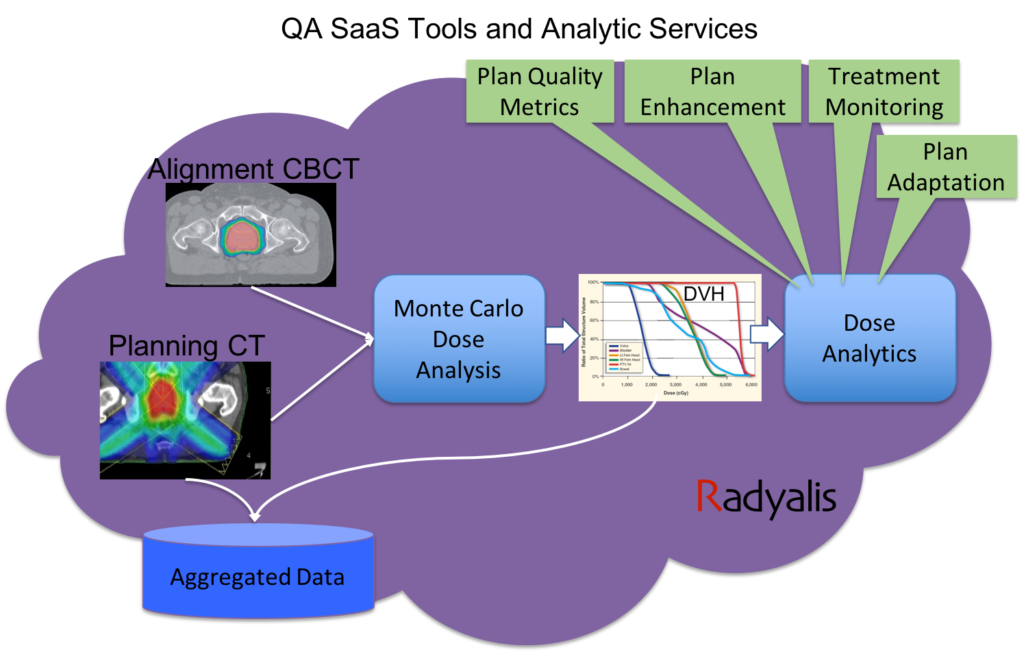During the course of radiation treatment, ongoing anatomical and physiological changes will occur for which the treatment planning should be modified to improve outcomes. Today’s best practices typically rely on simplistic matching and geometric deformation methods for evaluation of the treatment plan against the image of the day. These methods are particularly suspect near critical organs, such as head and neck tumors and spinal cord proximity.
As Radyalis software can quickly calculate dosage using cone beam computed tomography (“CBCT”) images (routinely used for patient positioning), it becomes possible to perform a continuous monitoring of patient dose received at each treatment session in a matter of minutes and while the patient is on the table.

A clinical evaluation provided by fast Monte Carlo simulation provides a rigorous framework for patient re-planning decisions, ensures better outcomes, and guards against over-dose or under-dose effects in critical regions during the treatment process. In an adaptive IGRT workflow, enabled by the ability to model particle transport in magnetic fields, Radyalis provides definitive guidance for real-time treatment plan adjustment. Such dynamic capability is critical to improved patient outcomes in new cancer treatment systems and procedures.
Radyalis enables a new generation of treatment planning tools and analytic services that can account for sources of treatment uncertainty, treatment progress, and better predict treatment modalities and outcomes, which today are based on clinician expertise. Robust treatment planning is a prime example, where the tool automatically and immediately adapts to changes in patient anatomy, motion, respiration, and placement to insure optimal dose delivery at every fraction.

Delivering Radyalis’ capabilities as a QA SaaS analytics service offers powerful advantages including dose analysis consistency across all health-care network providers, real-time quality metrics for determining treatment reimbursement and improved patient outcomes, and new analytic service platforms and business models.